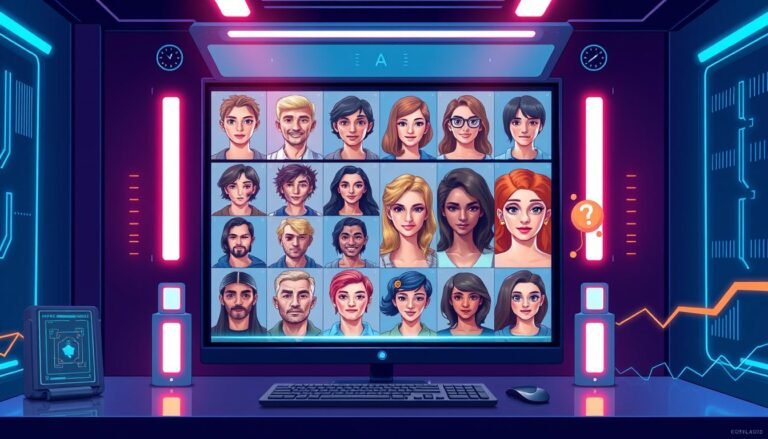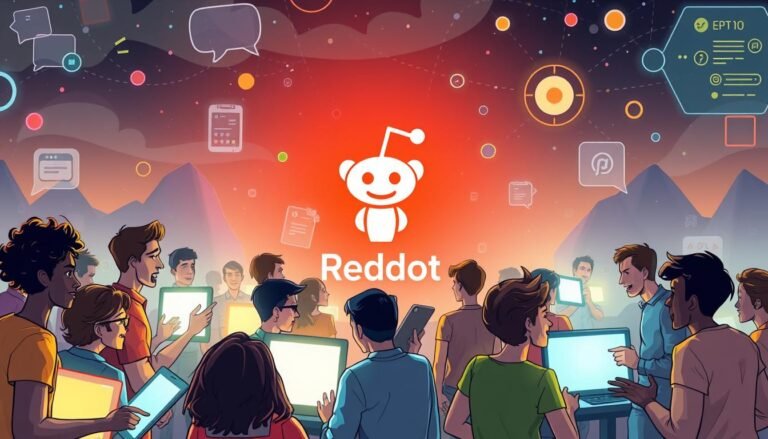Best AI Translator
In today’s world, where cultures mix and borders fade, AI translators are changing the game. They promise to make global communication easier. But can they really understand the subtleties of human speech?
AI translators are making a big impact in 2024. They use lots of text data and feedback to create translations that feel almost human. Tests show people prefer AI chatbots over old translation tools, especially for everyday talk.
The world of AI translation is growing fast. Multilingual AI models are making language barriers easier to cross. Whether it’s for work or just talking, these tools are key to understanding each other.
Key Takeaways
- AI translators are outperforming traditional tools in many languages
- Neural machine translation is advancing rapidly, improving accuracy
- Large language models handle cultural nuances better than before
- AI chatbots like ChatGPT are preferred for translation tasks
- Multilingual AI models are expanding language support
- Real-time translation capabilities are enhancing global communication
The Evolution of Language Translation
Language translation has changed a lot since the 1950s. The first machine translation was in the Georgetown-IBM experiment. It was slow and not very reliable. Now, we have advanced software that can translate many languages very well.
From Human Translators to AI-Powered Solutions
In the early 1990s, new tools helped translators work faster. These tools included translation memories and glossaries. By 2006, Google Translate was launched, making translation easy for everyone.
This change moved us from relying on humans to using AI. It was a big step forward.
The Impact of Technology on Translation Accuracy
In the late 1980s, a new method called statistical machine translation improved accuracy. IBM’s rule-based engine in the late 1990s set new standards. These changes made translations better and faster in many areas.
The Rise of Neural Machine Translation
In 2016, Google Translate used a new method called neural machine translation. This method uses deep learning to make translations sound more natural. DeepL, launched in 2017, showed even more AI potential.
Now, neural machine translation is the top choice for many. It offers better accuracy and sounds more natural.
As we keep moving forward, we’re making these AI tools even better. They help break language barriers and support global communication and cultural exchange like never before.
Understanding AI Translation Technology
AI translation technology has changed how we talk across languages. It uses smart algorithms and systems. These rely on deep learning and natural language processing.
At the heart of AI translators is neural machine translation. These models learn from lots of bilingual text. They understand nuances and context better than old methods.
- Recurrent Neural Networks (RNNs): Excel at processing sequential data, capturing dependencies between words and phrases
- Transformer Architecture: Enables parallel processing of entire sequences, leading to higher-quality translations
- Attention Mechanisms: Prioritize relevant information in the input sequence, improving accuracy
These technologies work together for fast and accurate translations. They handle text, speech, and images across languages. This leads to translations that feel more natural and right for the context.
| Feature | Benefit |
|---|---|
| Deep Learning | Improved accuracy and fluency |
| Natural Language Processing | Better understanding of context |
| Parallel Processing | Faster translation speeds |
As AI translation tech gets better, we’ll see even more precise and detailed translations. This will help break down language barriers. It will make global communication easier than ever.
Top Features of Leading AI Translators
AI translation tools have changed how we talk across languages. They offer features that are key for global communication.
Real-Time Translation Capabilities
Real-time translation apps are a big deal for quick communication. Google Translate, for example, can translate over 100 languages instantly. This helps a lot when traveling or doing business abroad.
Multi-Language Support
Multilingual AI models are the core of today’s translation tools. DeepL supports over 30 languages with great accuracy, especially for European languages. Microsoft Bing Translator goes further, offering text translation for more than 130 languages.
Context-Aware Translations
Understanding the context is key for accurate translations. Advanced AI translators like DeepL use smart algorithms. They keep the original meaning and tone, making translations sound natural.
Integration with Other Platforms
Many AI translators work well with other tools and platforms. Lokalise AI, for example, connects with over 55 popular tools. This makes work easier for businesses and developers.
| Translator | Languages Supported | Accuracy Rating | Key Feature |
|---|---|---|---|
| DeepL | 31+ | High | Layout preservation |
| Google Translate | 100+ | Good | Free, quick translations |
| Lokalise AI | 55+ | 2.4/5 | Tool integration |
| ChatGPT | Multiple | 2.5/5 | Cost-effective ($0.18/translation) |
Best AI Translator Options in 2024
The world of language translation software has changed a lot. Now, top AI translators offer amazing features. In 2024, some apps really stand out for their advanced abilities.
Google Translate is a leader, supporting over 100 languages and working offline. It also connects well with other Google services. Microsoft Translator is also great, supporting more than 100 languages and 12 speech systems.
DeepL is known for its accuracy, handling over 25 languages without limits. It’s especially good at translating complex texts. For businesses, Alexa Translations is fast, translating up to 100 documents in seconds.
| Translator | Languages | Accuracy (out of 10) | Ease of Use (out of 10) |
|---|---|---|---|
| Google Translate | 100+ | 9.0 | 9.5 |
| DeepL | 25+ | 9.0 | 9.5 |
| Microsoft Translator | 100+ | 8.5 | 9.0 |
| Wordvice AI | Popular pairs | 9.5 | 9.0 |
New players like Wordvice AI and Taia are also making a splash. Wordvice AI has a 9.5/10 accuracy score. Taia has a 99.4% client satisfaction rate across 97 languages.
Comparing AI Translators: Accuracy and Performance
AI translator accuracy is now a big deal in the language tech world. Recent studies have shown how different AI translation tools perform with various language pairs.
Testing Methodologies
Researchers use tough testing methods to check AI translator accuracy. They use Human-in-the-Loop (HITL) tests and detailed scorecards. These scorecards analyze each segment closely.
Metrics like Post-Edit Distance (PED) and Translation Edit Rate (TER) help measure how well translations do.
Results Across Different Language Pairs
Comparing languages shows some interesting facts about AI translation. Neural Machine Translation (NMT) systems often beat Large Language Models (LLMs) like GPT-4 in editing work. But, how well they do can change with each language.
For example, Swedish translations have higher error rates than French ones.
| Translation System | Strengths | Weaknesses |
|---|---|---|
| NMT | Consistent results, easier to post-edit | Less natural translations |
| LLMs | Natural, conversational language | Inconsistent results, struggles with complex content |
User Experience and Interface Comparison
NMT systems are fast and accurate for specific content. But, LLMs create more natural-sounding language. Google Translate supports over 100 languages, making it easy to use.
Microsoft Translator lets you talk across devices, making it better for users. DeepL focuses on top-notch translations for European languages.
As AI translation gets better, we’ll see more accurate and easy-to-use tools. This will help machines and humans work together better. We might see new ways to rewrite and check translation quality soon.
AI Translation for Business and Professional Use
AI translation tools are changing how we do business. They can translate up to 95% accurately, supporting over 280 languages and 50+ file formats. This makes them key for talking across borders.
For companies, AI translators make work faster. They can quickly translate many types of documents. This includes theses, CVs, blog posts, and business reports. Many services let you translate up to 500 characters for free, and more for a fee.
These tools are easy to use, with high ratings from users. Setting them up takes less than two minutes. Their simple design lets professionals focus on their main tasks while AI does the translation.
| Feature | Rating |
|---|---|
| Ease of Setup | 9.6/10 |
| Ease of Use | 9.3/10 |
| Language Support | 280+ |
| File Format Support | 50+ |
AI translation platforms also offer extra features. These include grammar checks, style improvements, and expert proofreading. These features help keep corporate messages clear and professional in any language.
The Role of AI Translators in Breaking Language Barriers
AI translators are changing how we talk to each other around the world. They help people from different places share ideas and work together. Let’s see how AI is making international business and cultural exchange better.
Enhancing Global Communication
AI translation tools make talking in different languages easier. Most users like them because they’re fast and work well. These tools translate words into other languages in a way that sounds natural and makes sense.
Facilitating International Business
In international business, AI translators are a big help. They quickly translate websites, blog posts, and product descriptions. This saves money and lets businesses use their resources better. More and more industries, like e-commerce and marketing, are using AI for translation.
Supporting Cultural Exchange
AI translators help people learn about different cultures. They make it easy to understand and connect with others from around the world. This technology helps us be more open, diverse, and understanding, making our world a more connected place.
| Impact Area | Benefit |
|---|---|
| Communication | Improved effectiveness between speakers of different languages |
| Efficiency | Time and effort saved through quick, accurate translations |
| Global Collaboration | Easier partnerships with worldwide clients, leading to growth opportunities |
| Accessibility | Translations available in approximately 50 languages |
As AI translation gets better, we’ll see even more ways it helps us talk to each other. It will make our world more connected and understanding of different cultures.
Limitations and Challenges of AI Translation
AI translation has changed how we talk to each other around the world. But, it’s not perfect. It faces many challenges that affect how well it translates.
One big problem is understanding context and subtleties. Idioms, sarcasm, and cultural jokes often get lost in translation. For instance, AI might not get the joke behind “it’s raining cats and dogs,” thinking it means actual cats and dogs falling from the sky.
Another issue is dealing with complex languages. AI struggles with tricky grammar and special terms. This is really hard in areas like medicine and law, where getting it right is super important.
| Challenge | Impact on Translation |
|---|---|
| Idiomatic expressions | Often translated literally, losing meaning |
| Cultural nuances | Misinterpreted or overlooked |
| Specialized terminology | Inaccurate translations in professional fields |
| Dialects and accents | Potential misrepresentations |
Privacy is another big worry. Even though good services protect your data, there’s still a risk. This is especially true for companies with secret documents.
Finally, relying too much on AI translation can be a problem. It might stop us from learning languages and understanding different cultures. This could make it harder to really connect with people from other places.
Future Trends in AI Translation Technology
The future of AI translation looks bright. Exciting advancements are coming. By 2029, the AI software market is expected to hit over $1.3 trillion. This growth will drive new innovations in translation tech.
Advancements in Natural Language Processing
AI translation is getting better. Neural Machine Translation engines, like Google MT, now offer top-notch translations for over 130 languages. Every day, Google Translate handles a huge 100 billion words.
These systems are learning fast. They’re getting better at understanding idioms and cultural differences.
Integration of Augmented Reality
Augmented reality translation is a new trend. It’s going to change how we deal with language barriers. Just point your phone at a sign in a foreign language and it will translate right before your eyes.
This tech could change travel, business, and cultural exchange. It’s a game-changer.
Personalized Translation Experiences
The future of AI translation is all about personalization. AI will learn your language style and preferences. It will even pick up on industry terms, like in renewable energy.
This means translations will feel more natural and right for you. It’s a big step forward.
Source Links
- Google Translate vs. ChatGPT: Which One Is the Best Language Translator?
- 10 Effective Online AI Translators in 2024
- 10 Best AI Translation Tools for Accurate Translations in 2024
- Modern Technology And The Future Of Language Translation
- The Evolution of AI Translation: The Future of Translation | Wolfestone Translation
- The Evolution of Language Translator Services in the Digital Age – Ingenuiti
- Best AI-based Translation Tools in 2024 and How to Use Them
- The 5 Best AI Translation Tools
- AI Translation | Beginner Guide | Rapid Translate
- 14 Best AI Translation Tools & Online Translators to Use Right Now – TranslatePress
- The top 10 AI translation tools for business growth in 2024
- 9 AI translation tools you need to try – Lokalise Blog
- 10 Best AI Translation Software & Tools (September 2024)
- 8 Best AI Translators in 2024 (Google Translate & Beyond)
- 9 Best Online Translators in 2024
- Comparing AI-driven Language Translation Services
- Machine translation (MT) VS generative AI for translation: Pros and Cons – Lokalise Blog
- Machine Translation vs GenAI in Translation
- AI Translator for Accurate Translations
- Free AI Translator | Wordvice AI
- Best 10 AI Tools to Boost Your Translation Career
- AI for Translation: Beat the Language Barrier for Global Expansion | Copy.ai
- Breaking Language Barriers With AI Translation Tools
- The Role of AI and Machine Learning in Translation
- Language Translation Using AI: Here Are The Benefits and Limitations | Nymbl Blog
- The Risks of AI Translation: Learning from Microsoft’s Controversy
- Top 5 AI translation trends and how they impact your business |LN Blog
- 11 AI Translation Industry Trends in 2024
- How AI Is Changing the Translation Service Industry in 2024







